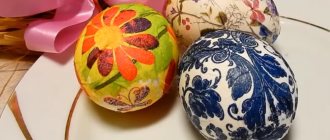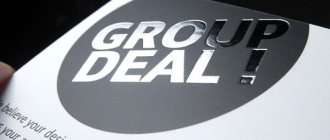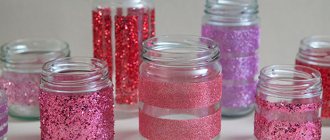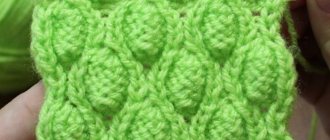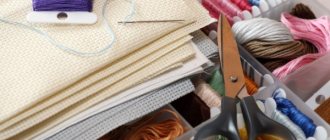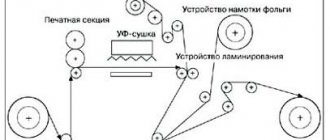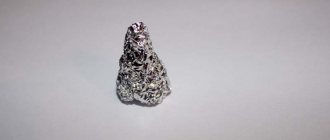Custom leather embossing
Many of us want to stand out and differentiate our organization.
For this purpose, bright colors of logos, advertising and souvenir products are used, which are used by office workers and clients of the organization. In addition, in everyday life we also want to buy something unusual and individual, to give an original gift to a loved one, colleague or boss. One of the options for the original detail is blind embossing on leather .
Using it, you can very beautifully and stylishly apply a logo to a leather product - a folder, diary, cover, table rug and other attributes of your home and office. As a result, you will receive an original item that will very favorably emphasize your status and indicate your stability and well-being.
Embossing on leather - original and stylish
Leather embossing is a way of applying images, logos, text and shapes of any shape using a special method that allows you to clearly and clearly highlight texture, volume and contrast. Using this method, you can make original things that emphasize the status of the organization and its leader.
Leather products retain their appearance for a long time, so they need a special way of applying the image. Embossing is exactly what makes a thing look expensive, stylish and of high quality. It lasts for a long time, so it is an ideal option not only for leather, but also for leatherette, eco-leather and other types of artificial leather.
Embossing on leatherette also takes place among modern methods of applying an image. This is a special method that allows you to apply text or a design without damaging the structure of the material. In the original, the result is almost identical to natural raw materials. Such things are most often used for advertising and marketing purposes, as well as to provide support for office workers.
If you want something particularly colorful, try foil stamping . It creates an interesting metallic finish on the stamp area and makes it stand out in contrast to the base material. This allows you to create bright silver and gold stamps with text, logo and any other image.
Case materials
Leather for embossing should only be vegetable tanned (vegetable tanned, in particular oak). Its main difference from chemically treated leather is that it is able to absorb water. And this is one of the main properties of leather used in embossing. Clothes or furniture are not made from this material. But in embossing it is important to use this kind of leather.
There are many embossing methods. But at home, embossing is most often done using a cliché, which is the most important tool for this. The technology of its use is simple: in order to transfer the image from the cliche to the skin, it is hit with a hammer.
Craftsmen purchase cliches or stamps in stores or make them themselves. Using a special tool, an engraving is made on metal plates in a mirror image, which will be imprinted and leave a pattern on the leather product. The depth of the engraving lines must be at least 3 mm.
Flat metal objects with three-dimensional ornaments (buttons, coins) are also used as cliches.
To ensure uniform impact force when stamping a design, the handle of the cliche is made smaller than the working surface of the hammer.
Related article: Crocheted children's blanket with bunny and carrots
Stencils with various images and patterns can also be considered tools for embossing.
Benefits of leather embossing
It's no secret that leather is one of the most wear-resistant materials. It is used for sewing shoes, clothing, accessories, as well as office and personal supplies. That is why all work related to processing and changing the appearance of this raw material must be consistent and also durable. That is why they use leather embossing , which has a number of advantages:
- Durability is a clear advantage that makes this method stand out from others. Due to the fact that during processing and application the texture of the treated area changes, such an image cannot be erased, washed away or removed in any way. It will always be there and it is impossible to get rid of it in any way.
- Effective and expensive. What could be better than a beautiful, expensive item that fully reflects your status? That is why this type of application is popular among firms, organizations and enterprises. It looks prestigious, expensive and of high quality. Natural material in combination with the logo of a legal entity immediately makes it clear that the owner of such a thing is reliable.
- Possibility of using additional materials. Stamping with foil and other materials will allow you to achieve the effect of gold stamping on the skin . This will make the end result bright and expensive, and its owner memorable.
- Application area allowing to cover up to 50 sq.cm. surfaces. This allows you to apply the image to almost the entire product, and in some cases even completely cover it. This makes it possible to make an individual item that will set you apart from others.
- Embossing on custom-made items. If you want to make something as original as possible, you can custom emboss leather using previously made items. In doing so, you get something that you will never find in today's market.
Considering these advantages, we can say that this type of image application is of very high quality, original and popular among people who manage businesses and engage in public activities. In addition, such a thing will become an original gift for any celebration.
cold stamping, materials and complete technology
Foil stamping can be used on a wide variety of materials. It is used on paper, leather, fabric and other materials. This method creates a naturalistic metallic effect. Applying a thin layer of metal to the surface of the product gives it a unique and interesting appearance and attracts attention.
Foil stamping can be done in many ways, we will look at three of them - hot, cold and embossed. Depending on the type of embossing chosen, the materials for the work are also selected.
Hot stamping
For hot stamping it is necessary to use special printing foil. It is a thin layer of metal applied to a polymer film using hot-melt adhesive.
The selected stamp is heated and the foil is pressed against the material. When heated, the glue melts and the metal remains on the surface of your product. After this procedure, all that remains is to remove the excess foil.
Cold stamping
When using the cold stamping method, you also need a special foil, but the method of applying it is different.
First, printing equipment creates an image using a special UV varnish. UV varnish is applied from a conventional photopolymer plate in a flexographic printing section, where it is partially polymerized by UV rays, then foil is applied to it.
Cold stamping is more economical than hot stamping. In addition, due to the absence of heating, this method can be used on a very wide range of materials that simply cannot be heated, for example, transparent thin film materials or coated paper. True, only materials with the smoothest possible surface are suitable for working in this particular way.
Congren embossing
This type of embossing is also called multi-level. Thanks to it, it is possible to obtain a relief image by locally compressing the material between two parts. That is, the material is placed on a heated matrix with foil, covered on top with a cold counter-matrix (otherwise called a punch) and a strong blow is made, compressing the material. Thanks to this approach, deformation occurs; as a result, the details of the applied image are not just painted, but also lie in different planes, creating a multi-level convex relief.
Types of foil
Foil is divided into many types, and the main criterion for dividing it is the method of embossing.
For hot stamping, the choice of foil is incredibly large: color, holographic, textured, metallized and diffraction.
Colored and metallized foil are used for decorating and enhancing products. Metallized foil has three colors - bronze, silver and gold. Colored foil is available in a wide variety of colors, and is also divided into matte and glossy.
There is a transparent varnish foil. When embossing matte surfaces with it, you can create a spectacular glossy colorless layer.
Textured foil is produced with various patterns imitating stone, leather, wood or other materials with an original structure.
Holographic foil is well known to us all; it is used to protect, for example, banknotes. Pictures or patterns appear on it at a certain angle.
There is even magnetic foil used in the production of plastic cards, bank and other documents. The cards are made up of several layers of plastic laminated together. The core is usually made of a plastic known as polyvinyl chloride acetate (PVCA). This resin is mixed with opaque materials, dyes and plasticizers to give it the appropriate appearance and consistency. This inner material is then laminated with layers of PVC or clear plastic. https://acard.ru/catalog/karty_loyalnosti/
Foil for cold stamping is not inferior in color to foil for hot stamping. Also, unlike hot stamping, this foil makes it possible to create shadows and halftones. However, spun-absorbent materials will not be cold embossed.
Foil foil is the simplest and most convenient choice for applying a design at home. It is presented in a fairly wide range of colors - all standard colors in matte, glossy and holographic versions. This foil is also called tone-sensitive foil. It is applied to a design already printed on a laser printer and, when heated with a laminator (or simply an iron), the color layer lags behind the base and is retained only in those areas of the sheet where toner is applied. Of course, such technology cannot be used on textured surfaces.
Materials
The required materials depend solely on the embossing method you choose.
For example, to create a simple business card, or indeed any paper work (not counting its textured types), you will need:
- Laser printer;
- Toner-sensitive foil;
- Laminator, or a simple iron.
After printing the desired image on paper or thin cardboard, attach the foil and pass it through a laminator, or iron it with an iron. Start with low temperatures, if the foil does not print, gradually increase the heat.
For foil stamping a pattern on a denser material, for example, on a book cover, this method is no longer suitable.
To do this you will need the following tools:
- A pre-made cliche - in other words, a prepared stamp;
- Foil stamping press;
- Suitable foil.
Any foil stamping press looks something like this:
Video on the topic of foil stamping, different methods of foil stamping
Here are a couple of video tutorials that will show you how to use a foil stamping press and how paper is foiled:
sdelala-sama.ru
Imaging technology
- Before applying a logo or text to an item, a team of designers develops a layout of the future picture. If the layout exists, the process immediately moves to another phase.
- Based on the selected layout, a cliche is made - a metal stamp, with the help of which hot stamping will be applied to the leather . It is used for all products that require your image.
- The cliche is attached to a heat press, after which it is heated to the desired temperature and is ready for the next step.
- The press lowers and, due to pressure and temperature, leaves an impression on the material.
- To create a metallic effect, a sheet of foil is placed between the press and the product before printing the print. After pressing, some of the material that fell under the press remains on the print. The result is silver and gold embossed leather .
- After all procedures have been completed, the product is completely ready for use. You can delight and surprise your friends, colleagues and loved ones.
Applying patterns
So, we are getting closer to the embossing process, but first we need to choose one of three options for applying patterns:
- Blind application is when you apply a design using a cliché onto the smooth surface of the skin. The parts in this case will be located in the same plane, that is, they will not differ in volume. Most often, this type of application occurs when heated, and the more and harder you press the pattern with a press, the better the imprint will remain on the leather insert.
- Applying patterns using foil. Here you need to have special tools for embossing (clichés, for example) and, as the name of the method implies, foil. The foil here will be inserted between the leather and the cliche; it will decorate the design with color. This technology is also called “hot stamping” because it necessarily involves heat.
- Embossing of patterns. Here you can either use foil or not. This method also uses a press and heat.
Related article: Crochet round yoke: master class with patterns for a children's dress
Items that are embossed on leather
Despite the fact that embossing can be applied to any item made from natural or artificial raw materials, such as eco-leather, faux leather, etc., there is a list of the most popular items on which blind embossing :
- Diaries and organizers are perhaps the most popular category of products. Many organizations, enterprises, factories, as well as government agencies often use this method of applying images. , embossing on artificial leather is more often in demand . This is the most economical option, suitable for a notebook that will be used throughout the year.
- Folders are a popular item for work in which important documents are stored, awaiting the signature of a letter on the manager’s desk. That is why this item must correspond to the status of the enterprise. When making such a thing, you need to remember that it will serve your enterprise for many years.
- Business card holders are an important part of not only the work process, but also everyday life. This is a place where all the data about partners, clients and businesses that provide you with their services is collected. All this information placed on business cards must be stored in one place. That is why a business card holder with your logo will decorate any desktop.
- Covers for documents . Have you decided to give someone an original gift, or to emphasize your attention? Then appreciate the beauty of gold stamping on leather used on document covers.
By placing your logo on such a product, you advertise your company and also emphasize your stability and reliability. In addition to natural materials, embossing on leatherette . It is practical, economical and very common. Modern artificial materials are in many ways not inferior in appearance to natural ones, but are much cheaper.
In addition, we can produce an engraved metal nameplate that you can place on any product you wish.
Industrial embossing methods
Naturally, the process of foiling in production differs significantly from manual embossing. And, of course, equipment for industrial embossing is not limited to an iron.
Professional embossing is a type of printing, the only difference being that thin metal is used instead of paint.
As a rule, letterpress printing technology is used to create a print, that is, patterns protrude above the surface of the cliche.
When examined in detail, this process looks like this:
- The printing plate is heated by current to the desired temperature (the temperature is maintained for the required time using a thermostat).
- A strip of multilayer foil is “stretched” across the work surface. In other words, at each working stroke, the metal sheet moves along the pattern at a given distance and is pressed by a press for hot foil stamping.
In fact, the principle of operation of the press is similar to the operation of a home printer. It differs, first of all, in the volume of products produced and the accuracy of settings.
How cliches are made industrially
To work with foil, cliches of increased strength and wear resistance are used. Typically, dies are made of metal, most commonly brass, copper, magnesium and zinc. Magnesium dies are most often used for small batches of products; the most wear-resistant brass dies are used for large batches of products.
Zinc and copper cliches have good strength indicators, but they are not used so widely, since the use of these materials has low environmental performance. Embossing on cliche metal is done using chemical etching or mechanical embossing.
Types of foil for industrial stamping
The range of foil used in production is quite wide; the following types are most often used:
- Metallized foil . This is the most common metal sheet that we use in everyday life. With its use, concave and curved patterns are made on different surfaces.
- Pigment foil . It has an interesting property: after application it takes on the appearance of paint.
- Transparent foil . Usually applied to a matte surface, creating a varnished effect.
- Texture foil . Imitates the textures of wood, leather and even stone. This type of embossing on fabric looks very interesting.
- Holographic foil . Creates a hologram effect. It is noteworthy that it is by stamping with holographic foil that the state protects banknotes from counterfeiters.
- Magnetic foil . It is also related to finance; it is used in the manufacture of bank cards.
- Diffraction is used for printing on plastic.
All these materials are hot stamping foil. There is also a cold method, for which a separate type is used, which stands out from the general characteristics.
Cold foil stamping is used for surfaces that cannot withstand high temperatures. A thin metal film is applied to products such as bags and other polyethylene items. Unlike the hot method, using cold stamping you can create designs with halftones.
The possibilities of this technology are great, with its help you can make original drawings, logos, congratulations, advertising inscriptions, etc. Without large financial costs, you can do foil painting with your own hands and decorate a leather item at home and it will literally sparkle with new paints.
